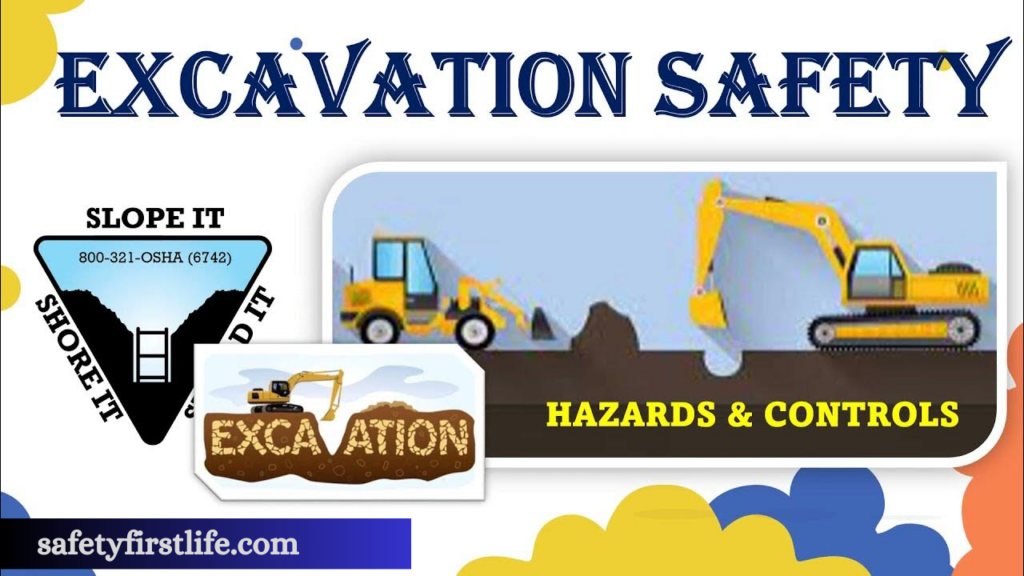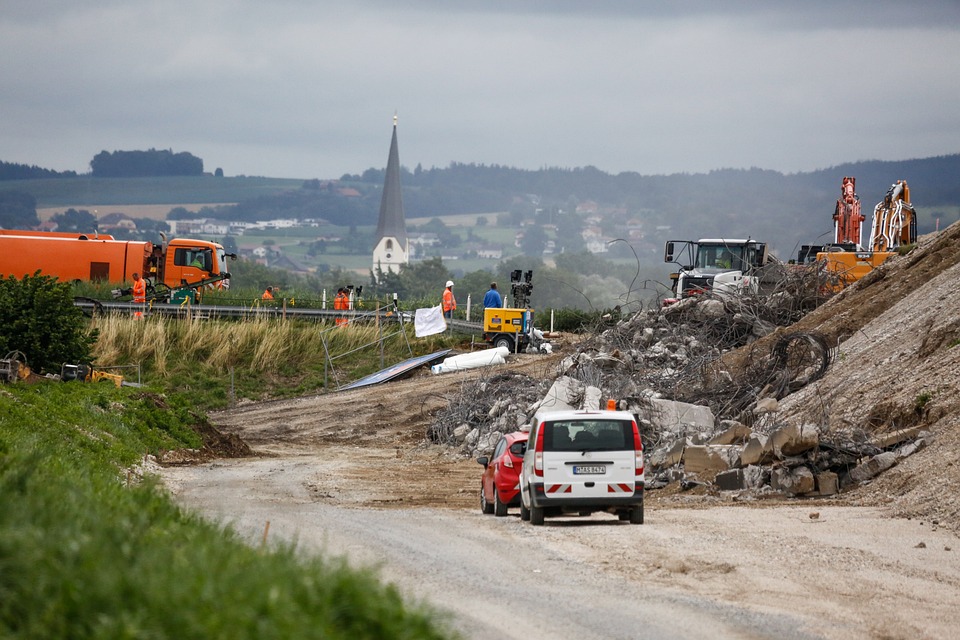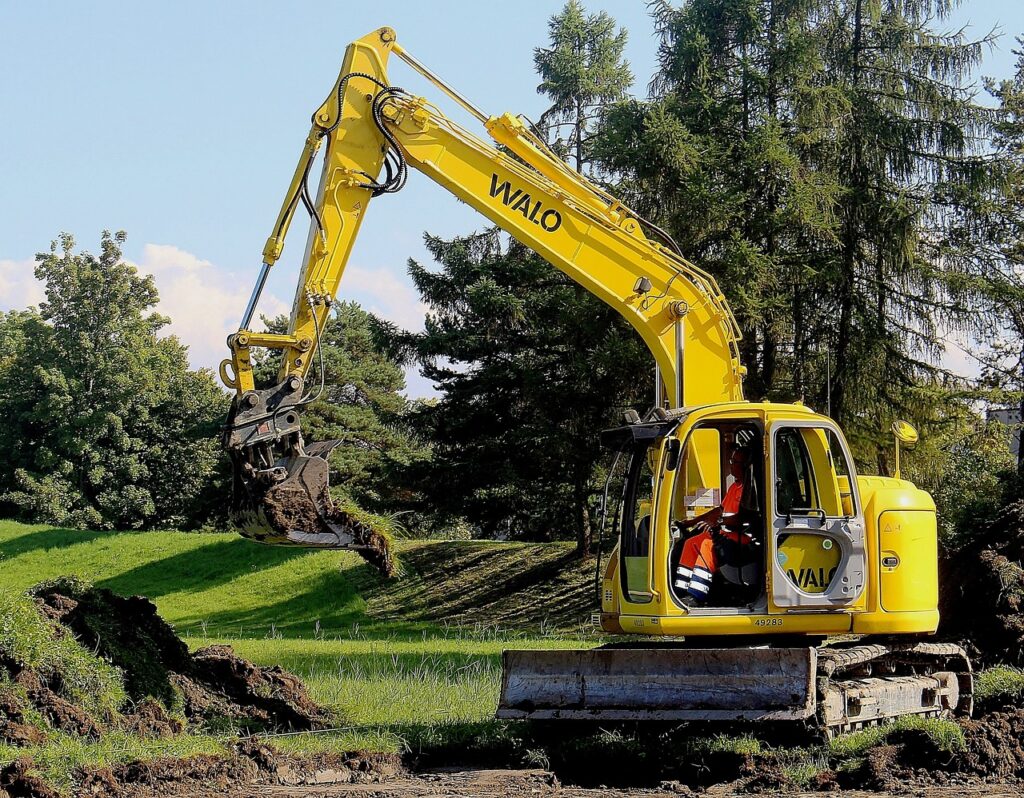Excavation Safety Checklist:
Excavation checklist need to be filled by a safety practitioner when inspecting the site?
As a health and safety practitioner, Safety Officer you act as a planner, organizer, manager and supervisor. Your major role is to maintain a safe and healthier
workplace and to prevent accidents, incidents, injuries or harm to employees.
The law says you must prevent danger to workers in or near excavations. To maintain the required precautions, a competent person must inspect excavation
at the start each working shift and at other specified times. No work should take place until the excavation is safe.

Key issues are:
- Collapse of excavations
- Falling or dislodging material
- Falling into excavations
- Undermining nearby structures
- Underground and overhead services
- Inflow of ground and surface water
Checklist:
- Are underground utilities, cables and pipelines located and marked prior to digging?
- Is a Confined Space Entry Permit required, issued and available on site?
- Is gas testing required and performed; e.g., excavations deeper than 1.2 m (4 ft)?
- Is a Stand-by Man and/or Fire Watch required and available on site?
- Is access to plant/process equipment maintained?
- If excavation is near a roadway are flagmen with bright orange vests\ present?
- Is the shoring/sloping/benching acceptable to prevent sidewall cave-in?
- Is shoring material in sound condition and free of damage/defects?
- Is shoring installed/maintained by qualified personnel?
- Are adequate ladders provided within a travel distance of 7.5 m (25 ft)?
- Are ladders properly secured and do they extend 1 m (3 ft) above the surface?
- Is the excavation free of tension cracks or other evidence of sidewall failure?
- Is the excavation free of water, hydrocarbons, or other toxic substances?
- Are materials and spoils set back at least 0.6 m (2 ft) from the excavation’s edge?
- Are underground utilities and piping located, marked and protected from damage?
- Are the dewatering system effective and maintained?
- What about noise control methods; is the nearby public safe and comfortable with the site activities?
- Are there sufficient signs and signals available near the excavation site?
- All NOC’s copies related to underground and overhead service providers kept and available onsite?
- Did all the workers and staff are wearing task specific PPE, for example
Hard hats, high visibility jackets, safety shoes, dust mask and safety gloves? - Are overall conditions acceptable and safe for work?
- All deficiencies need to be corrected immediately.
If you are serious about excavation safety; you need to follow these steps. In this way, you can control any of the hazards at source prior it converts to a workplace accident.
Importance
Ensuring safety during excavation is crucial to prevent accidents and injuries. Firstly, always conduct a thorough site assessment to identify potential hazards. Furthermore, it’s essential to regularly inspect equipment and trenches to maintain safety standards. Finally, provide comprehensive training for all workers to ensure they are aware of safety protocols and emergency procedures.



Wow so informative .It was helpful dealing with my issues in concept of excavation safety checklist.So,Great
I know a lot of folks whom I think would really enjoy your content that covers in depth. I just hope you wouldn’t mind if I share your blog to our community. Thanks, and feel free to surf my website Webemail24 for content about SEO.
I loved as much as you will receive carried out right here.
The sketch is attractive, your authored subject matter stylish.
nonetheless, you command get got an impatience
over that you wish be delivering the following. unwell unquestionably
come more formerly again as exactly the same nearly very often inside
case you shield this increase.
Saved as a favorite, I like your website!
dultogel dultogel dultogel
Hi to every body, it’s my first visit of this blog; this web site includes awesome
and truly fine data designed for visitors.
Helpful information. Fortunate me I discovered
your website unintentionally, and I’m surprised why this twist of
fate did not came about earlier! I bookmarked it.
What a lovely comment—thank you!Sounds like a happy accident! 😊 So glad you found the site, even if a bit later than expected. Thanks for bookmarking—it means a lot!
Remarkable things here. I’m very satisfied to see your article.
Thanks a lot and I’m taking a look ahead to touch you.
Will you kindly drop me a e-mail?
Really appreciate your feedback—thank you! I’d be happy to connect. You can reach me through the contact form or email listed on the site. Looking forward to hearing from you!
That is a very good tip particularly to those
new to the blogosphere. Short but very accurate info… Appreciate your sharing
this one. A must read post!
That’s so great to hear—thank you! I’m really glad the post hit the mark.
Attractive part of content. I just stumbled upon your weblog and in accession capital to say that I acquire in fact loved account your weblog posts.
Anyway I will be subscribing on your augment and even I
achievement you access constantly rapidly.
I really appreciate your thoughtful comment—so glad you enjoyed the posts! Thanks for subscribing, and I’ll do my best to keep the content coming consistently. Welcome aboard!
Great article. I am going through a few of these issues as well..
Thank you! I’m really glad the article resonated with you. You’re definitely not alone—many of us go through similar challenges. Wishing you strength and clarity as you work through them!
Today, I went to the beach front with my children. I found a sea shell and gave it
to my 4 year old daughter and said “You can hear the ocean if you put this to your ear.” She placed the shell
to her ear and screamed. There was a hermit crab inside and
it pinched her ear. She never wants to go back! LoL I know this is completely off
topic but I had to tell someone!
Oh no, poor little one! 😅 That must’ve been quite the surprise! Thanks for sharing—it gave me a good laugh. Sometimes the best stories are the unexpected ones.I wish your daughter’s ear is okay and that her love for the beach returns someday! 😊Hope her next beach trip is a little less eventful!
I loved as much as you’ll receive carried out right here.
The sketch is attractive, your authored subject matter stylish.
nonetheless, you command get bought an edginess over
that you wish be delivering the following. unwell unquestionably
come more formerly again as exactly the same nearly
a lot often inside case you shield this hike.
Really appreciate your comment—thanks a lot! I’m glad you enjoyed the style and content. I’ll keep working on refining the experience even more. Hope to see you back soon!
We’re a bunch of volunteers and opening a new scheme in our community.
Your web site offered us with useful information to work on.
You’ve done an impressive job and our entire group might be grateful to
you.
I really appreciate your thoughtful message. It’s inspiring to hear about volunteers coming together to create positive change. I’m glad the site could contribute in some small way—thank you, and best of luck to your team!